Before Photoshop: How photographers have been manipulating images for more than 150 years
posted Friday, September 28, 2012 at 9:40 AM EST

The other day I came across the famous photo of Henri de Toulouse-Lautrec posed as both the artist and his model. On that very same day, I saw that Adobe announced its latest version of Photoshop Elements. It seemed a good moment to take a look back at the history of manipulated images, mostly as a reminder that altered images aren't a relatively new phenomenon; they're as old as photography itself.
Since the first Daguerreotypes, photographers have experimented with various ways to manipulate and alter photographs. Double exposure as seen in the Lautrec photo was one, another was printing from overlapping multiple negatives. And then there was multiple exposure on a single piece of photographic paper. Finally, airbrushing has long been a favorite of dictatorships around the world as it was used extensively to remove their political opponents from group photos. Although manipulating analog photographs is difficult and time consuming, with fairly simple techniques skilled workers could create seamless photographic prints -- some of which rival the best of today’s computer-manipulated images.
One of the earliest experimenters was Swedish-born photographer, Oscar Rejlander who lived most of his life in Victorian England. In the 1850s, Rejlander learned the wet-collodion process that produced negative images on glass. By combining dozens of these negatives he made his epic montage “The Two Ways of Life.” It is a very Victorian allegory depicting the alternatives paths of a sinful life versus a pious one. Naturally, the nude figures in the sinful life half helped to popularize the image which was rather risqué for its day. (I should mention that Rejlander also shot hundreds of photos to illustrate his friend Charles Darwin’s classic behavioral psychology book, The Expression of the Emotions in Man and Animals, and he is remembered for that work, too.)
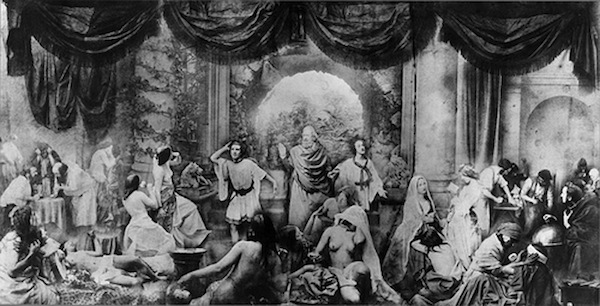
The Two Ways of Life (1857) by Oscar Rejlander
At about the same time, another English photographer, Henry Peach Robinson, was also using this technique -- called “combining printing.” However, he made more conventional-looking images. His most famous work, “Fading Away,” is a perfectly morbid Victorian deathbed scene. It is superbly done, but for me begs the question of why didn’t he just take a straight shot with models. Sadly, Robinson had to stop photographing and close his studio when he was only 34, when prolonged exposure to toxic photographic chemicals had ruined his health.
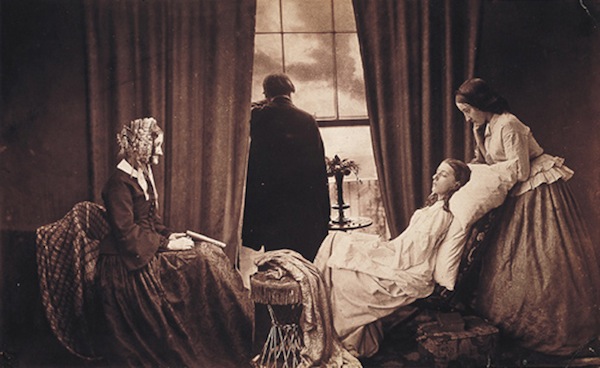
Fading Away (1858) by Henry Peach Robinson
Now, life is a lot simpler and safer for photographers, and every day millions of people use an Instagram app to alter their photographic images. But Instagram is an idea that's more than a hundred years old. Between 1885 and 1915, the Pictorial movement captured the public’s imagination, just as Instagrams have today. The Pictorialists believed that the only good photograph was a manipulated one. They altered every photo by reducing or eliminating sharp focus, printing in colors other than black and white, and adding elements such as brush strokes to images. The photo by George Seeley, “The Black Bowl” is an example of a manipulated Pictorialist image.
Despite the huge popularity of these sentimentalized and painterly Pictorial photographs, other photographers rejected them and produced more “modern” images. However, they too, had no problem manipulating images to achieve their purposes. One of these early modernists was Grete Stern who created the blue photograph of a "female lamp" (No. 1 from the series Sueños).
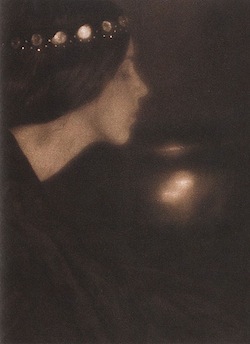
The Black Bowl (1907)
by George Seeley
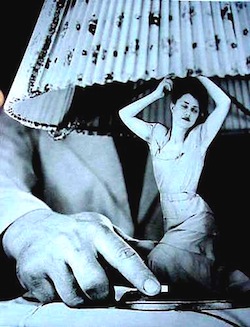
No. 1 from the series Sueños (1949)
by Grete Stern
In the 1930s, another modernist photographer, the famous American artist known as Man Ray, was living in a garret studio in Paris. He was the archetypical photographer and artist of the era, hanging around with Lost Generation writers such as Ernest Hemingway, Surrealist artists such as Salvador Dali and photojournalists such as Robert Capa. Women were one of his favorite subjects and perhaps his most famous and most copied photograph is “Le violon d’ Ingres” (Ingres' violin). This manipulated photo is a take-off on the work of painter Jean-Auguste Ingres, with the naked torso of cabaret singer Kiki de Montparnasse presented as a “musical instrument” to play, complete with f-shaped violin sound holes on her back.
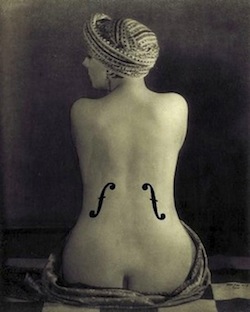
Le Violen d'Ingres (1924)
by Man Ray
Currently, photographer Jerry Uelsmann may be the pre-eminent analog image manipulator. Since the 1960s, he has produced an extraordinary body of work. He's known for his large black-and-white prints of astonishingly realistic, yet obviously manipulated images. Uelsmann is a darkroom worker of rare skill, who uses several enlargers at once and combines several black-and-white negatives to create deeply imaginative and dreamlike images.
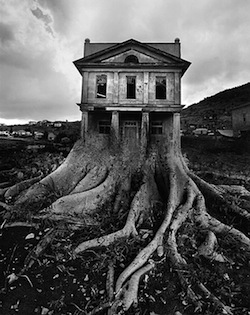
Tree House (1982) by Jerry Uelsmann
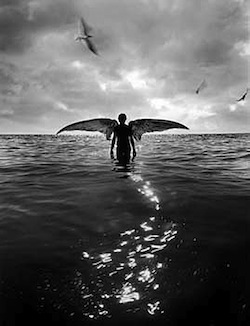
Untitled (1993) by Jerry Uelsmann
Several years ago, I attended one of Uelsmann's photo lectures. Seeing his prints projected behind him on huge auditorium screens made them even more impressive and breathtaking. Uelsmann is a throwback to Rejlander and the Pictorialists, and like them believes that his imagination alone can determine how many negatives he needs for a single image. He is also very open to the possibilities offered by digital imagery. “I am sympathetic to the current digital revolution and excited by the visual options created by the computer," he once said. "However, I feel my creative process remains intrinsically linked to the alchemy of the darkroom.”
Fair enough.
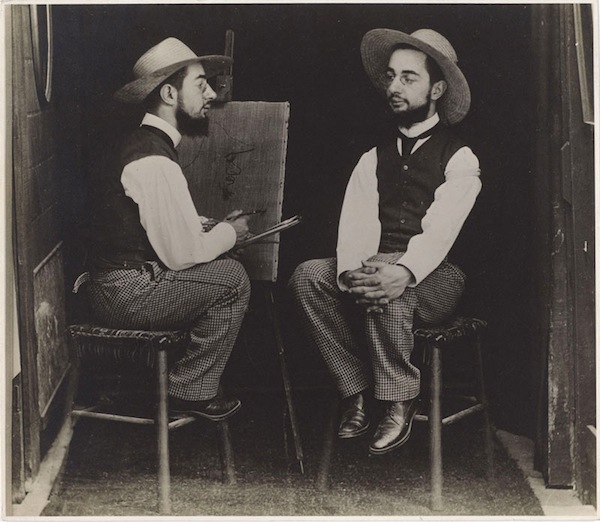
Henri de Toulouse-Lautrec as Artist and Model (1892)
by Maurice Guilbert and Henri de Toulouse-Lautrec